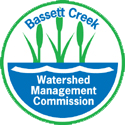News
The Hidden Power in Our Yards
Tue, May 19, 2020What if you had the power to protect and conserve water, provide food and habitat for wildlife and pollinators, reduce your carbon footprint, feed the hungry, and reduce obesity and diabetes just by doing one thing differently? Would you do it? Well, the good news is that we all have that power—and the answer lies in our own backyards!
According to NASA satellite imagery, the largest “crop” in the U.S., is not corn, wheat or soybeans, but lawns. U.S. lawns cover three times more land than corn—our country’s largest agricultural crop. Many fashions have come and gone over the past four hundred years, but lawns have had staying power. Historically, lawns served as a status symbol for European aristocrats who showed they were wealthy enough not to need food grown on every square inch of their property, like the peasants. In essence, they could afford to waste the space.
With world population and consumption of resources steadily increasing, and the fact that we are currently in the midst of the Sixth Mass Extinction, the most educated minds in biology and conservation are urging people to reevaluate consumptive lawns. Yards have the potential to power feed people directly by sustaining vegetable gardens or indirectly by supporting wildlife and pollinators that, in turn, pollinate our food.
Baby Steps—No Mow Fine Fescues
Over seed a thin lawn with “no mow” fine fescues which have roots that reach a foot into the soil rather than the three inches typical for lawns. These deeply-rooted lawns don’t need any watering after they are established. These no mow grasses are not typically sold at big box stores, but available (online) through native plant nurseries.
Medium Steps—Pollinator-Friendly Lawns
Reestablish lawns or over seed thin lawns with low-growing, flowering plants such as white clover and self-heal. These plants grow in a wide variety of sun and soil conditions and still provide homeowners with the look of a lawn. Again, these seeds are available through native plant nurseries. Additional resources can be found on the University of Minnesota Extension Service website (http://turf.umn.edu/low-input-lawns/) and Minnesota Board of Water and Soil Resources “Lawns to Legumes: Your Yard can BEE the Change” website (https://bwsr.state.mn.us/l2l).
On a side note, many people wonder if Creeping Charlie is good for bees. The short answer is no, since only 8% of the tiny purple flowers have enough nectar to actually feed a bee (Southwick et al. 1981). This underhanded plant uses a “lucky hit” strategy to attract bees—which reminds me a bit of gambling. Every once in a while, the bees hit a “jackpot” flower, but that’s the exception, not the rule. And then the bees use their precious energy and get nothing in return.
Giant Steps—Skip the Lawn and Plant Natives or Vegetables
If the only time you go out to your yard is to mow it, maybe you don’t need a lawn at all. Maybe the power of your yard lies in its potential to grow native flowers, trees and shrubs or vegetables instead. Native wildflowers provide higher quality nectar and pollen than their cultivars (cultivated varieties). Plus, native wildflowers come back year after year without replanting, they don’t need fertilizers, and they typically have long roots so they don’t need watering after their first growing season. A to Z information about native plant nurseries, how-to videos, grants, landscapers, designers, installers, garden coaches and folks to assist with maintenance can be found at BlueThumb.org.
Written by Dawn Pape on behalf of the Bassett Creek Watershed Management Commission (BCWMC), a local unit of government comprised of the nine cities that drain to Bassett Creek, focused on protecting water. BCWMC is a member of the West Metro Water Alliance. www.bassettcreekwmo.org.

